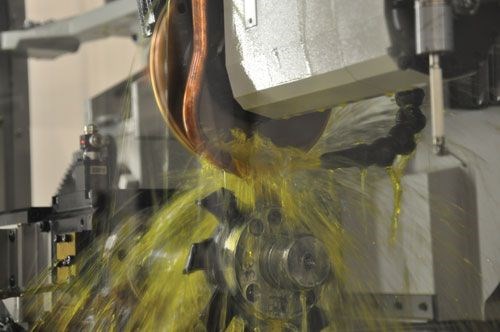What is Rotary Disc Erosion?
Here, a copper-tungsten rotary electrode shapes a diamond tool.
Share


Autodesk, Inc.
Featured Content
View More








Hwacheon Machinery America, Inc.
Featured Content
View More
Here, a copper-tungsten rotary electrode shapes a diamond tool.
It’s not how crop circles are made. Rather, it’s an electrical discharge process that’s akin to profile grinding. However, the copper-tungsten electrodes that are used do not touch the workpiece—material is removed via non-contact spark erosion.
This type of machine is primarily used to cut diamond tools. I saw one in action when I visited Great Lakes Custom Tool in Peshtigo, Wisconsin. The six-axis QX D400, made by Vollmer, combines rotary disc erosion with traditional profile grinding. In creating a diamond tool with this machine, GLCT first uses disc erosion to bring a tool’s diamond cutting edges to their proper geometries. Next, the disc electrode is automatically swapped out for a grinding wheel that grinds secondary clearances into the carbide substrate behind the diamond. Combining these operations into one setup not only speeds the production of new tools, but in some cases it improves the quality of clearance surface finishes so that cut material is less likely to adhere to the tools when they’re being used.
Read A Role For Rotary Erosion to learn more about this atypical machine and how GLCT benefits from it.




































